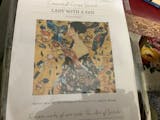James McNeill Whistler (1)
James McNeill Whistler—a name that sounds as enigmatic as his art. Born in 1834, Whistler was an American-born painter who didn’t just follow the rules of art, he bent, twisted, and occasionally snapped them in half, making him one of the most fascinating figures of the 19th century. If you’re picturing an artist who wore a beret and was perpetually brooding in a studio, you'd be right—at least about the brooding part.
Whistler wasn’t the kind of artist who would paint a subject and then say, “Oh, I painted this person, and here’s why!” Nope. He was more of a “let the art speak for itself” kind of guy, which is why he gave his works titles like Nocturne in Black and Gold or Arrangement in Grey and Black—he wanted you to focus more on the feeling and less on what was actually in the frame. And he definitely didn’t want you asking too many questions.
Perhaps his most famous work, Whistler's Mother (officially titled Arrangement in Grey and Black No. 1), is the quintessential example of his approach. It’s a portrait of his mother, but the title is more about the colors and the composition than a straightforward family snapshot. It's somber, simple, and yes, a little mysterious—just like the artist himself. If it had been titled Portrait of My Mom, it might not have had the same weight. Instead, Whistler’s knack for reducing everything to "arrangements" and "nocturnes" created a sense of elevated mystery.
Whistler wasn’t just an artist; he was a self-made brand, all sharp wit and sharp suits. He liked to be provocative—whether it was his cheeky comments about the art world, his famously unsuccessful legal battle with critic John Ruskin, or the way he insisted his work be considered in terms of pure aesthetics rather than narrative. Whistler famously said, “Art happens—it's not made”—as if to say that painting wasn’t just about creating something; it was about finding something that already existed in the ether. This laid-back, almost “whatever” approach was also paired with his love for scandal and high society drama.








